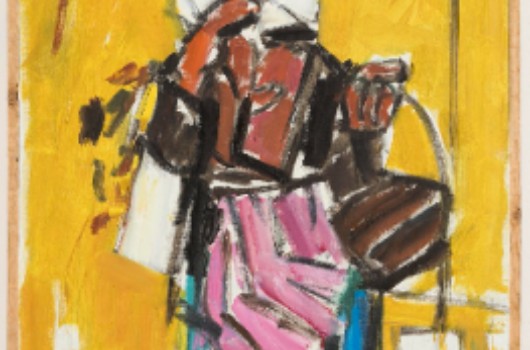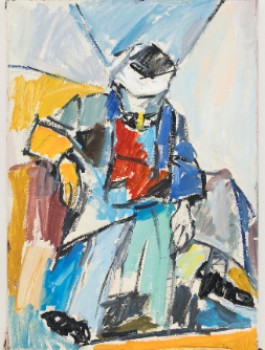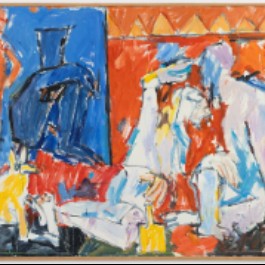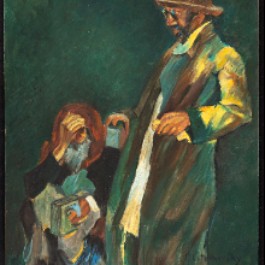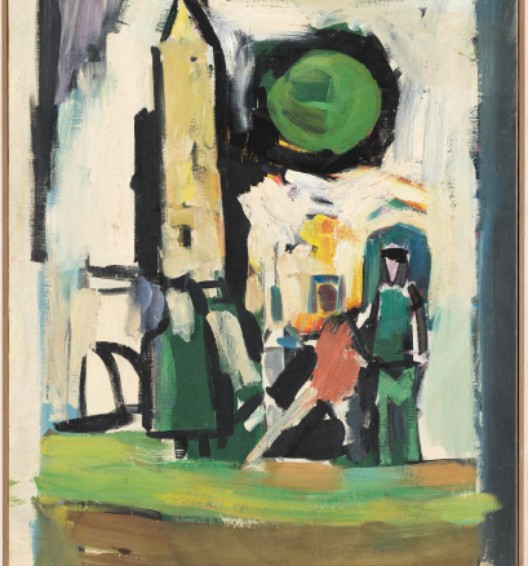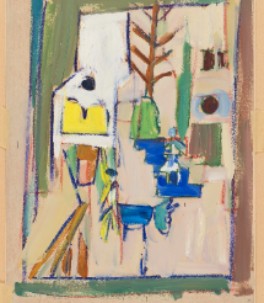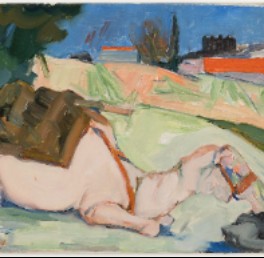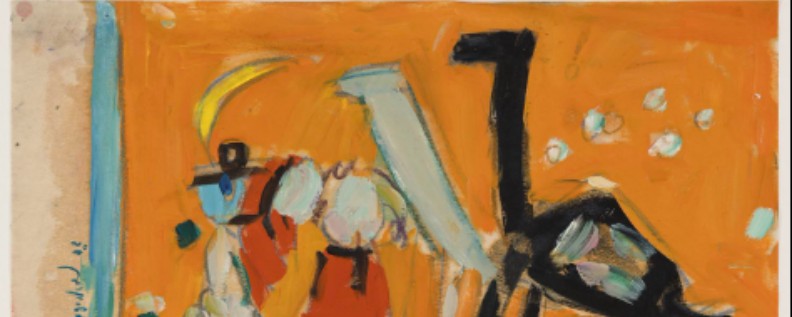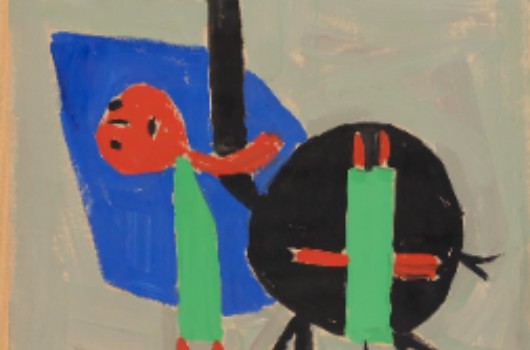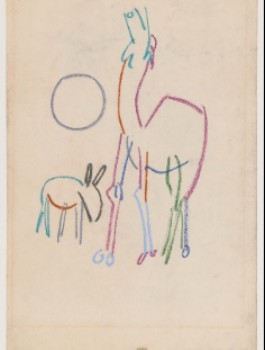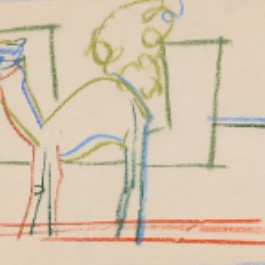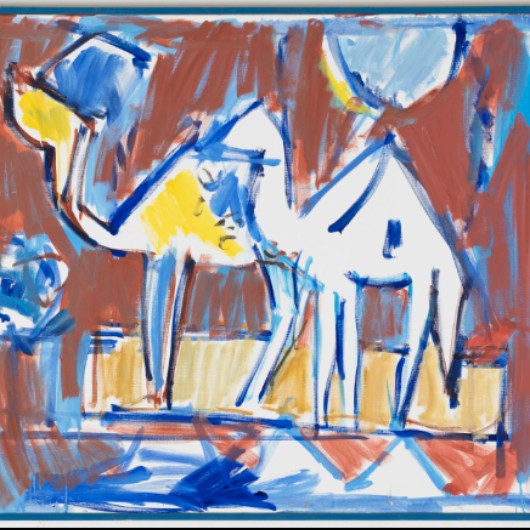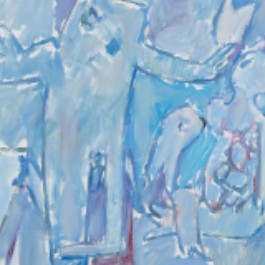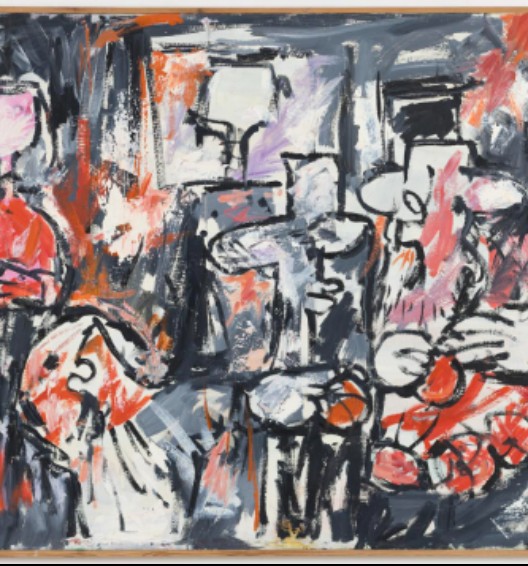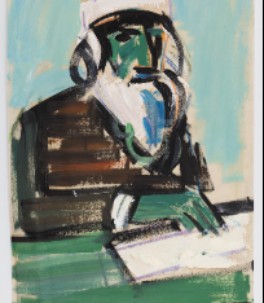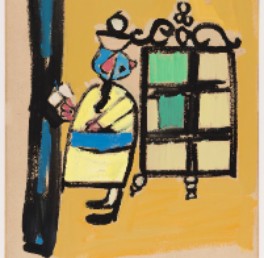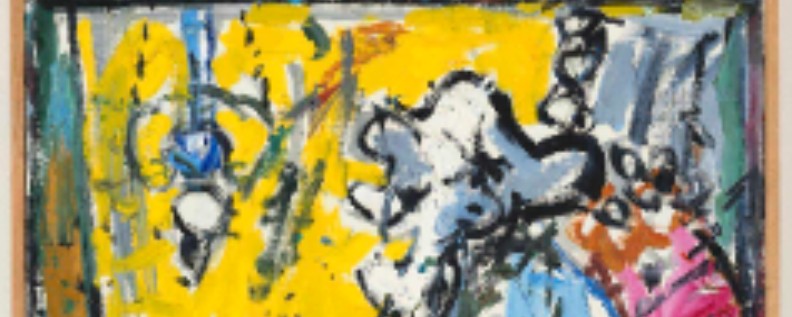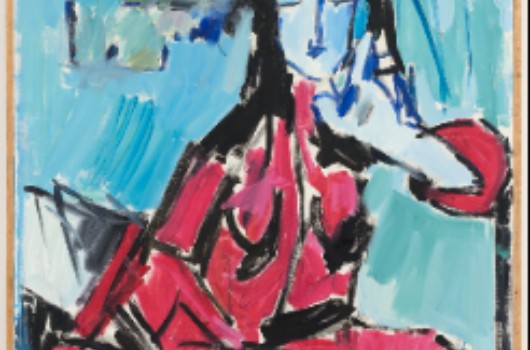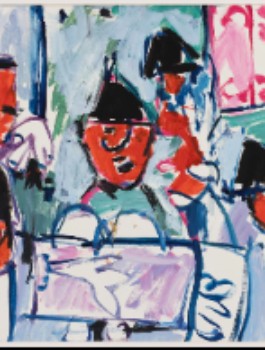After the end of the First World War, Litvinovsky returned to the Land of Israel and lived first in Tiberias, then in Hartuv, Ptnah Illit, Motza Illit, and finally in Jerusalem. The transition from Eastern Europe to the scorching sun of the Middle East called for a stylistic, thematic and colour change. Like many artists of the time (such as Reuven Rubin, Nachum Gutman, Arieh Lubin and others), Litvinovsky portrayed the daily life he saw in the Galilee and the Judean Mountains with a degree of naivety verging on Orientalism: Arabs in kufiyyehs, Hasids in shtreimels, Yemenis with sidelocks, women in veils and women in snoods, as well as local farm animals such as donkeys and camels.
Litvinovsky returned to these figures throughout his life. However, in line with the transformation of his artistic style, their portrayal changed from realistic to expressive, and finally to abstract, blurring them into colour spots and outlines, to the point that sometimes it is difficult to distinguish between a Jew holding a siddur in front of the Ark of the Covenant and a Muslim woman working in the kitchen. The Jewish ceremonial objects are mixed with arabesques and other motifs from Muslim architecture, a mosque tower alternates with a synagogue dome, while the artist is led by colour and line.

